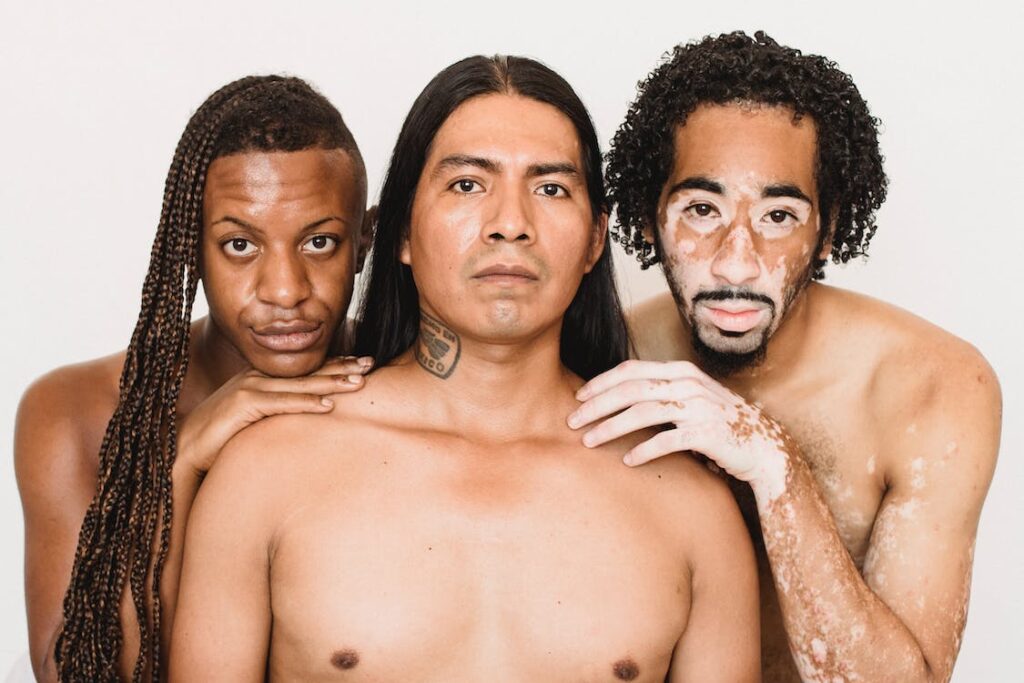As with most social media trends, body positivity is generally held to have originated in the US. However, the movement seeing new-found life on social media today is estimated to be around the 3rd iteration of empowering people disenfranchised due to their physical characteristics. Body positivity is a movement that champions the acceptance of all bodies irrespective of their outward presentations such as size, skin colour and tone, shape, gender, scars, injuries, and the like. Its origins are generally accepted as the Victorian dress reform movement of the late 19th century. This initial movement sought to emancipate women from the constraints of female etiquette of dressing in the era, which included uncomfortable and even injurious practices such as tightlacing, wearing heavy wiring to mould body shape, wearing whalebone corsets, wearing heavy dresses that did not take practical needs into account, and the like. Ironically, this recorded history of a movement that focuses on inclusivity and empowerment also takes only recorded Western history into account. Considering the social constraints inflicted upon women irrespective of country and culture, it is difficult to believe that the movement in the white West is the only point of origin for the concept.

Body positivity’s second wave originated in the United States and paid particular attention to how people, especially women, were discriminated against solely due to their size. The movement took place in the late 90s, and unsurprisingly, was a pushback against the time’s dangerous dieting culture. The movement also saw the birth of the ‘National Association to Aid Fat Americans’, whose name changed into ‘The National Association to Advance Fat Acceptance’ following the gradual politicisation of its approach. Another shift in the movement was a clear shift in the subject the movement focused on. The movement in Victorian England looked at women’s dress, while the second wave, perhaps in line with the more libertarian ideals of the age, directly considered women’s bodies.

The third wave of body positivity was yet wider in its acceptance of people: it now included men and was more assertive of the need to accept people of colour (this need to categorise between people and people of colour alone deserves its own conversation). The present movement is largely centred around social media, starting in 2012, when smartphones were taking over the world. The rise of social media meant that a lot of people were posting different aspects of their day-to-day lives, and getting used to having their lives acknowledged and validated through social media. This led to certain types of bodies gaining more traction online: white, slender, able-bodied women and men garnered more social media attention than others. This was of course, due to the corporate backing that these bodies had: the same bodies have been heavily promoted through films, TV, written literature and the like for decades.

The alienation that people who did not fit into this extremely narrow mould (both literally and figuratively) therefore were left feeling alienated and dissatisfied in their own bodies. It also trapped them in a neverending rat race to conform to these standards. Social media was also able to create ‘body trends’ as influential celebrities used the resources they had at hand to fit into the trends of the day. Most recently, certain key influencers and media personalities have been at the forefront of driving the trend for fat transfer operations, liposuction, breast implants, lip implants, as well as various other surgical interventions on various parts of their bodies and faces for women. The push to have men fit into a certain ‘masculine’ image is much the same. Celebrities and non-celebrities alike should all have the freedom to alter their appearances as they please; what is toxic is portraying their appearance as ‘natural’, or rather achievable, through non-surgical means. Privileged people who do so often influence their followers to conform to these idolised images, usually through the purchase of a cosmetic or a dieting or fitness ‘plan’ that they sell. Usually, by the time those who can achieve this physical appearance do so, they find that the celebrities have shed that particular image for a different one, thus perpetuating the entire cycle once again.

Body positivity as a movement, should be able to contend with the consumerist ideology that is peddled at the expense of people’s hard-earned money, mental well-being and their continued good health. Unfortunately, however, the movement, despite being well-meaning, often gets co-opted for commercial gain and utter misinterpretation. Corporate co-option of social movements is not a new phenomenon and can often even be contained provided that advocates for the movement are educated and have the liberty and the platform to disseminate their ideas, which the body positivity movement so clearly does. Unfortunately, the movement’s social messaging is often lost to misinterpretation and misrepresentation, and not without good reason. The insecurities everyone has about their bodies are very different, which means the manner in which everyone internalises the meaning of ‘body positivity’ as an ideology is very different. And while the manner in which they understand and then represent body positivity may be helpful to those like them, it can be very damaging to others.

‘Is it an outfit or is she just skinny’ is the result of one such misrepresentation of messaging that had body positivity as its intention. The trend mostly gained traction on the popular video-sharing platform TikTok and aimed to discuss whether the most popular fashion trends that were being pushed on social media that day or week actually displayed good fashion sense, or whether those modelling it were ‘just skinny’. More often than not, the consensus was that the outfits only looked ‘good’ on lean, slender bodies of average or above-average height. Naturally, this excluded those who did not fit this form, while still having this ‘skinny content’ aggressively promoted to them. While the ‘is it fashion or is she just skinny’ had a point to make on the fashion and the brands that were being promoted, it also contradicted the movement’s stated goal of being accepting and not discriminating against all body types. More specifically, it implied that certain fashion trends, certain garments or certain choices did not belong to bodies of a certain size.

There are also other ideological criticisms of the movement as it is being played out today. For example, body positivity has sometimes been criticised for encouraging unhealthy lifestyles that can be detrimental to health. Sometimes, a feeling of insufficiency is what pushes people to strive for what they believe to be ideal, and while the ideal may be difficult to achieve, the journey to do so alone can be very meaningful. Dissatisfaction with one’s physique has often led many to embark on fitness journeys and heighten their quality of life in ways that would once have been unimaginable to them. On the other hand, body positivity can sometimes mistakenly advocate for high body fat counts. This could be detrimental for those who need help with staying motivated to maintain a healthy lifestyle. There is also the criticism that the movement does little to empower those who feel little self-worth, as the movement can seem like it is shifting the blame from ‘not having the perfect body’ to ‘not having the perfect attitude’. It also makes little sense to essentially blame the public when the idea of the ideal body type has so much money invested in it. Even today, when body positivity has hit a peak in the attention it has garnered, the image of a slender feminine body or the lean, muscular, narrow-waisted man is at the core of so many media productions from fashion runways to the main character in a book or TV show.

Body neutrality is another movement that has gained momentum in the wake of body positivity. The phrase underpins the idea that it is not always possible to view one’s body positively, as dissatisfaction is the reality of the human experience. What is needed is to divorce one’s self-worth from physique, while always striving to have a healthy relationship with it. Neutrality advocates for exercise or beautification so far as it pertains to self-care for example, without any strings of shame or guilt for either engaging or not engaging in them. It also leaves individuals with more mental space to appreciate other things that should feed into their self-worth; such as their personality, their wit, and the like.

Everyone encompasses more than just their bodies in what they have to give to the world, and everyone is a complex human with wildly different lived experiences and emotions. Any movement that seeks to empower the vast varieties that the human race has to offer will only succeed with this understanding at the forefront and the foundation of its ideology.
(Theruni Liyanage)
